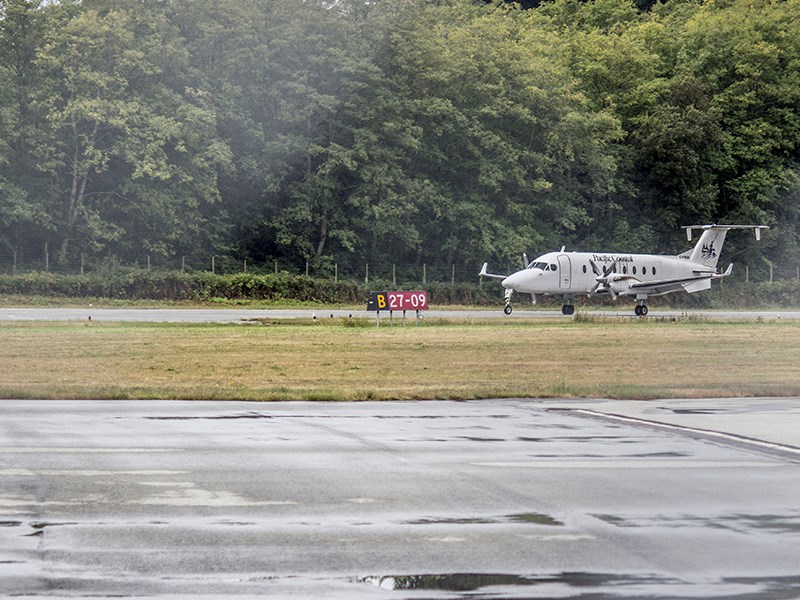New information about aircraft takeoff requirements has pushed City of Powell River staff to pull out all the stops in a runway-extension project.
City director of infrastructure Tor Birtig reported to council’s finance committee that staff would need an additional $160,000 to fund the project. It has recently come to light that Pacific Coastal Airlines’ SAAB brand aircraft is limited to takeoff on runways with an incline of up to 1.5 degrees; Powell River’s runway has a 1.52 degree slope.
“We thought it might just be an issue of significant figures, but I guess SAAB didn’t see it that way,” said Birtig.
Pacific Coastal Airlines has seen an increase in passenger traffic through Powell River and having the larger capacity aircraft will allow the company to continue serving them, said Quentin Smith, the airline’s president.
“The last thing I want to do is reduce the size of the equipment we are running out of there,” said Smith.
The city was already planning to extend the runway’s effective length by 300 feet. To gain that length, the project will move the runway threshold by repainting lines and moving lights to make up the added length.
City of Powell River councillor and chair of the city’s finance committee Russell Brewer said the upgrades are necessary and important.
“It will give increased takeoff length for the SAAB planes to come in more often,” said Brewer. “It will increase capacity and the size of planes that can land there. All metrics are pointing to increased passenger traffic through the airport.”
With the planned extension the project will call for added paving, a measure that will allow the city to drop the elevation at the end of the runway slightly and make the effective slope less than 1.5 degrees, said Birtig.
“It’s the takeoff that’s the problem,” he said.
During summer, when prevailing winds come from the west, aircraft are able to takeoff from the other side of the runway, but during fall, when prevailing winds come from the southeast, the SAAB would not be able to service Powell River.
“The pressure is on obviously but we’re keen to work with the city to get what we can done as fast as possible,” said Smith.
Prevailing winds could change as early as September, said Birtig.
Pacific Coastal’s SAAB has a passenger capacity of 34, while the airline’s smaller aircraft can take 19.
Council, which had cancelled its August 4 regular meeting, has reinstated the meeting as a special council meeting to be able to allocate the project funds.
Brewer added that at this point the extending the runways length through adjusting the end points makes the most economic sense. The added 300 feet will not open the airport up to large-capacity airliners, but the incremental move is a step in the right direction, said Brewer.
Birtig said his department is “pulling out all stops to get the project done.” He said he does not expect any service disruptions at the airport as a result of the project and will direct the contractor who wins the contract to complete the work in a way not likely to interrupt Pacific Coastal’s schedule.



